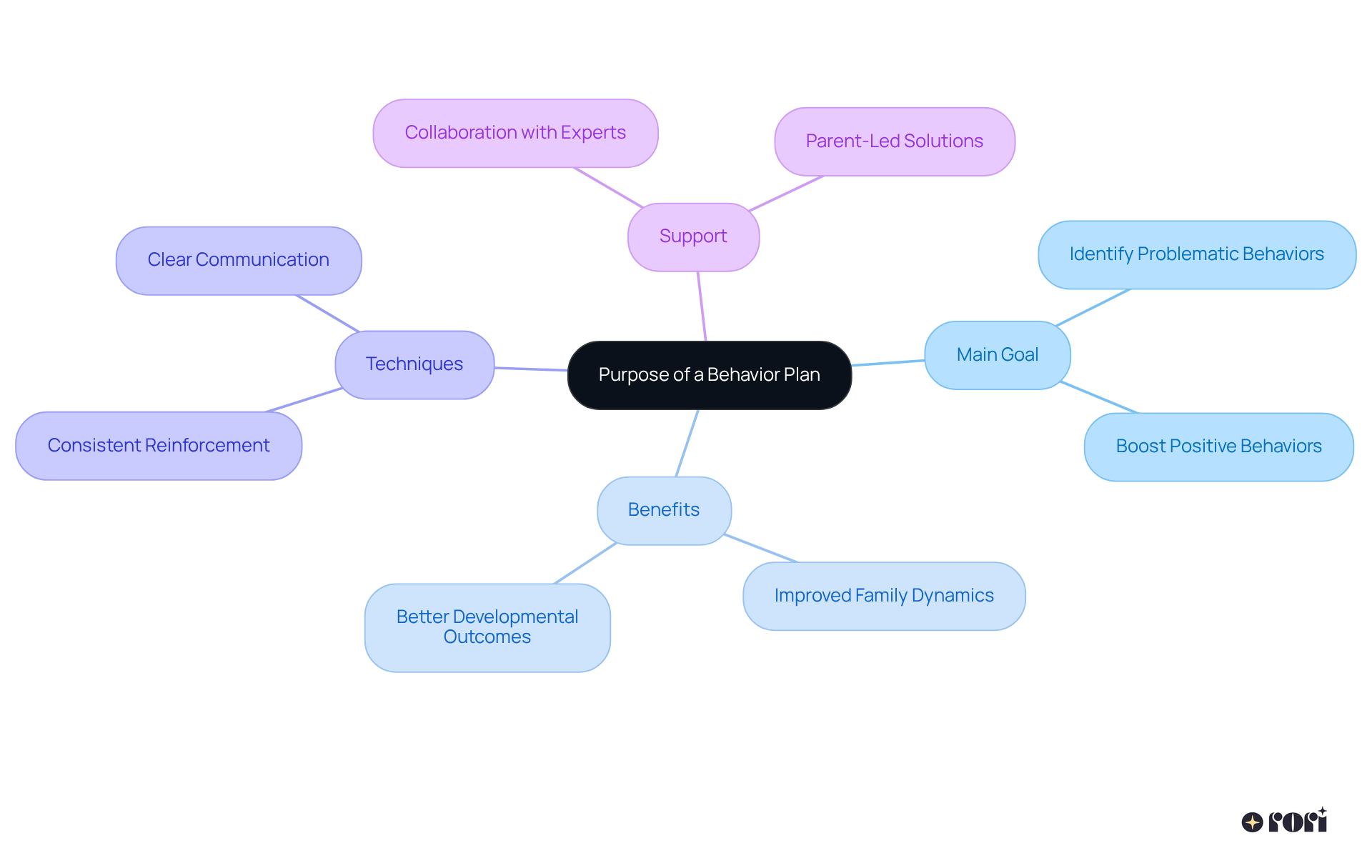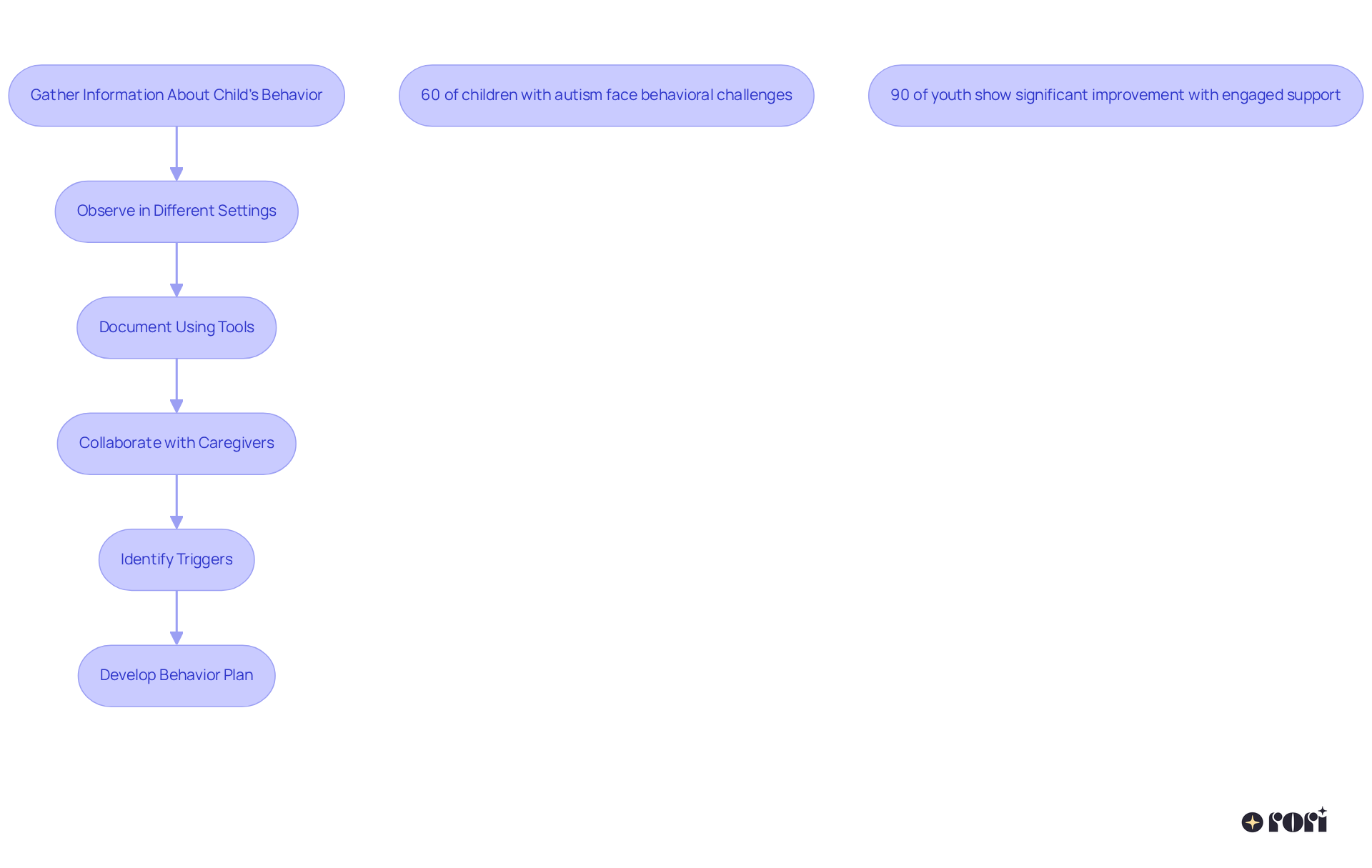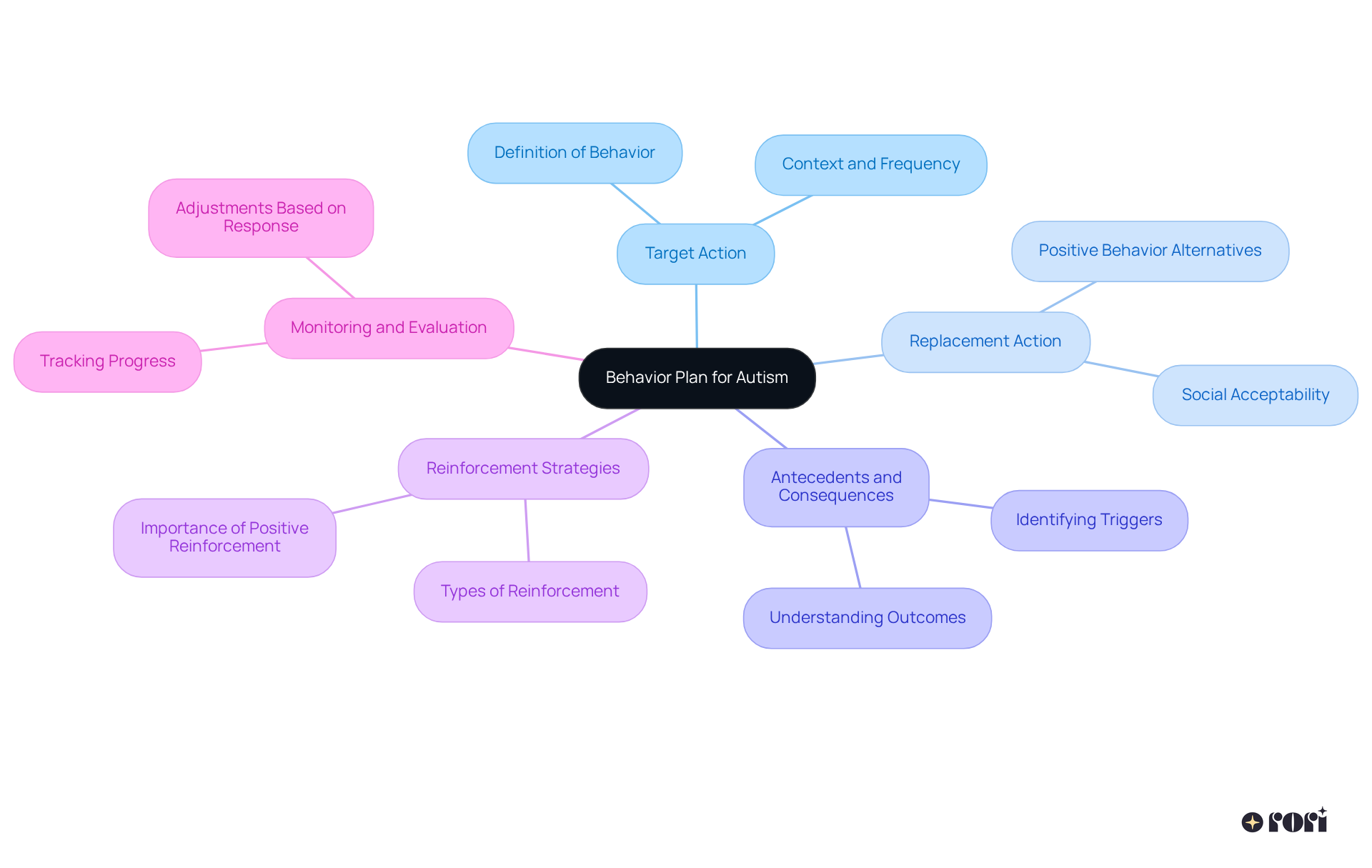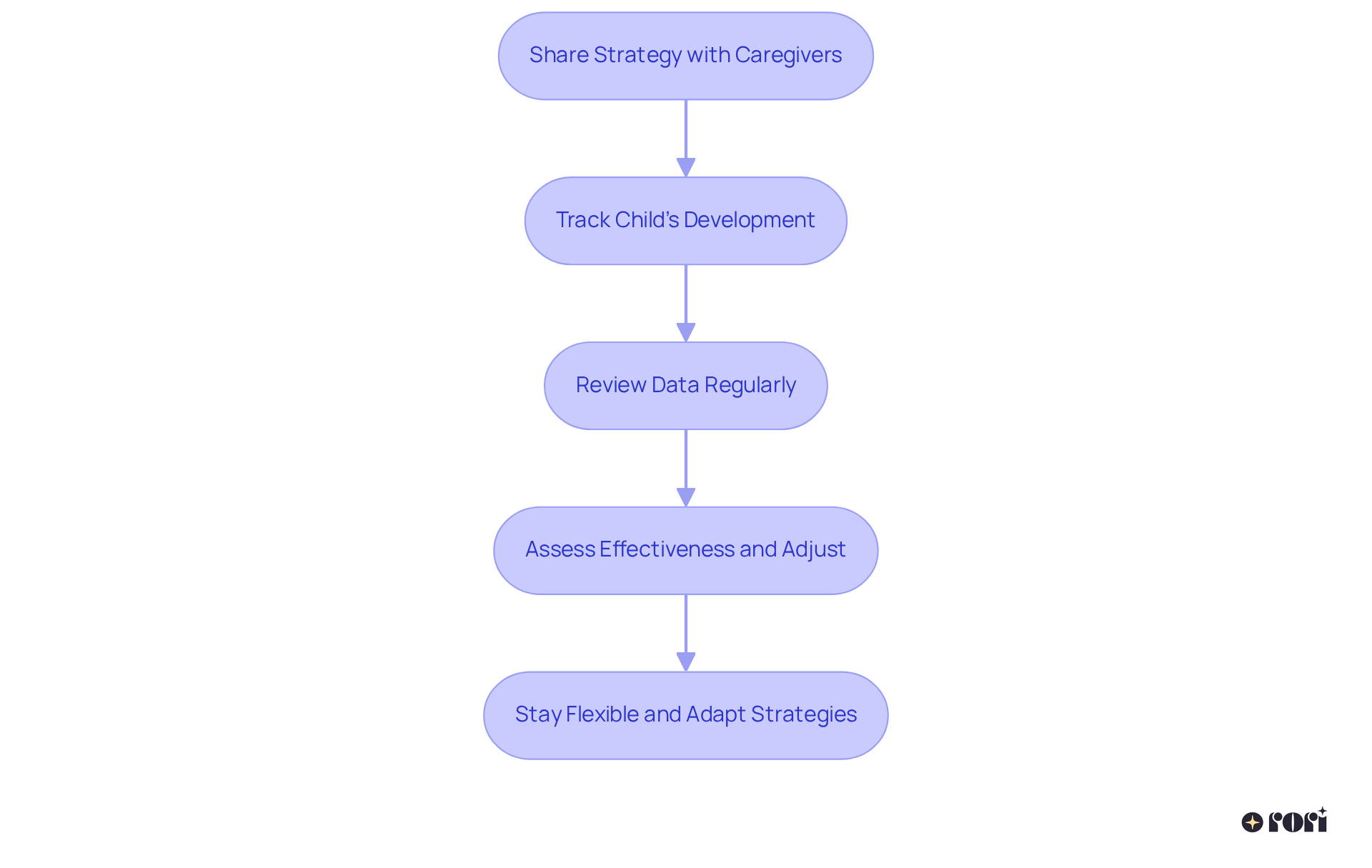This article presents a friendly and structured approach to crafting a sample behavior plan for children. It highlights the importance of understanding behavior, recognizing triggers, and implementing effective strategies for positive change. By breaking down key components of the plan—like defining target behaviors, establishing replacement actions, and monitoring progress—it emphasizes how caregivers and professionals can work together to nurture emotional resilience and skill development in children.
Let’s explore this together! Understanding these elements can feel overwhelming, but you’re not alone. Many parents face similar challenges, and it’s all about finding the right support. By defining target behaviors, you can pinpoint what needs to change, and by establishing replacement actions, you create a roadmap for positive behavior. Monitoring progress allows you to celebrate small victories along the way.
Remember, you’re part of a community that cares! Engaging with professionals can really make a difference, as they can provide valuable insights and strategies tailored to your child’s needs. So, let’s take this journey together, fostering growth and resilience in our little ones—one step at a time!
Creating a behavior plan for your child can feel like navigating a maze filled with challenges and uncertainties. 😅 These plans are essential tools that help caregivers identify and modify problematic behaviors while promoting positive actions. As families strive to foster healthier interactions and emotional resilience, you might wonder: how can you effectively develop and implement a behavior plan that truly meets your child's unique needs?
Let’s explore this together! This guide will walk you through the critical steps involved in crafting a sample behavior plan, empowering you to support your child’s growth and well-being. We’re here to help you every step of the way!
A conduct strategy is like a roadmap designed to help young people navigate the tricky situations they might encounter. Its main goal? To identify and adjust behaviors that can be problematic while boosting the positive ones. By digging into the reasons behind a young person's actions, caregivers can create a nurturing space that encourages growth and learning.
This strategy emphasizes teaching alternative actions that fulfill the same needs as the unwanted behavior, paving the way for healthier interactions and better emotional control. Not only does this proactive approach benefit the young person, but it also enhances family dynamics by easing stress and frustration. Youth psychologists highlight the importance of these action strategies, noting that they provide clarity and guidance for both parents and kids, leading to better developmental outcomes.
Effective behavior change techniques—like consistent reinforcement and clear communication—are essential for success. They help youngsters develop the skills they need for positive behavior and emotional well-being. Plus, when caregivers are equipped with ABA principles and strategies, they become better able to support their children’s behavioral goals through active involvement and data collection.
To support your child’s growth, consider teaming up with experts who can help tailor a strategy that meets your family’s unique needs. We’re here to help you every step of the way! 🌟 Plus, we offer a complimentary consultation to discuss how our customized strategies can best support your youngster. Let’s explore this together!

Developing a behavior strategy begins with understanding your child's behavior in different settings—like home, school, and social situations. By observing your child in these environments, you can identify specific actions, noting when they happen and what might trigger them. Tools like anecdotal records and activity checklists can help you document these observations systematically.
It's also important to collaborate with teachers, therapists, and other caregivers. Their insights can provide a broader perspective on your child's behavior patterns. This comprehensive approach not only helps you identify triggers but also aids in creating a sample behavior plan to address and modify behaviors.
Did you know that nearly 60% of children with autism face behavioral challenges? This highlights the need to understand the context of these behaviors for effective intervention. When recommended strategies are fully implemented with engaged adult support, about 90% of youth show significant improvement!
Additionally, Rori Care's behavior care engine streamlines this process by conducting functional behavior analyses and generating a sample behavior plan with automatic progress reports for clinicians. This ensures that treatment strategies are adaptable and focused on your child's progress.
With this integration, families can effectively support their child's behavioral goals, leading to better outcomes and empowering caregivers. Let’s explore this together! We’re here to help you every step of the way!

A well-organized sample behavior plan is essential for effectively addressing behavioral challenges in children with autism. It should include several key components:
Target Action: Clearly define the specific behavior you want to address. Be precise about what this behavior looks like and when it happens. For instance, if a child often shouts during class, clarify the context and frequency of this action.
Replacement Action: Identify a positive behavior that can replace the target conduct. This should serve the same purpose as the undesirable behavior but be more socially acceptable. For example, if a child shouts for attention, teaching them to raise their hand instead can be a great alternative.
Antecedents and Consequences: Take note of the triggers (antecedents) that lead to the target behavior and the outcomes (consequences) that follow. Understanding these elements is crucial, as research shows that addressing antecedents can significantly reduce challenging behaviors. For example, if a child acts out when bored, adjusting the environment to include more engaging activities can be beneficial.
Reinforcement Strategies: Outline how you will encourage the desired behaviors. This could involve verbal praise, tangible rewards, or additional privileges. Positive reinforcement is a key aspect of Applied Behavior Analysis (ABA) because it promotes the repetition of desired actions. Skinner emphasized that using positive reinforcement effectively is essential.
Monitoring and Evaluation: Set up a way to track progress and evaluate the effectiveness of your strategy over time. This may include regular check-ins and adjustments based on the child’s response. A qualified analyst can assist in creating personalized plans with measurable objectives and evidence-based techniques, ensuring that the plan remains adaptable to the child’s needs. Incorporating functional behavior analysis allows for a deeper understanding of the behaviors being targeted, while automatic progress report generation supports ongoing evaluation and clinician review. Gathering information on the frequency of target behaviors and the success of replacement actions is vital for continuous assessment. Research underscores the importance of systematic data collection methods to ensure interventions are tailored and effective.
By integrating these elements, parents and clinicians can develop a comprehensive sample behavior plan that addresses challenging behaviors while also fostering skill development and emotional resilience in children with autism. Let’s explore this together!

Once you’ve set up the conduct strategy, it’s really important to keep things consistent across all settings. Start by clearly sharing the strategy with everyone involved in your child’s care—this includes family, teachers, and therapists. This teamwork ensures that everyone is on the same page with strategies and reinforcement techniques, which is key to fostering positive change.
Tracking your child's development means carefully documenting their actions before and after implementing the strategy. You might find it helpful to use charts or logs to note any changes, whether improvements or setbacks. Regularly reviewing this data is essential for assessing how well the strategy is working and making any needed adjustments. Research shows that effective oversight can significantly enhance therapy outcomes, allowing for quick changes based on observed behaviors.
If certain strategies aren’t yielding the results you hoped for, stay flexible and open to tweaking your approach based on your observations and input from others involved in your child’s upbringing. This ongoing process not only keeps the behavior plan relevant but also empowers you to adapt to your child’s changing needs, ultimately supporting their growth and development. Let’s explore this together!

Creating a behavior plan for your child is such an important step in nurturing their emotional and behavioral growth. This structured approach not only tackles those tricky behaviors but also encourages positive alternatives, giving children the tools they need to thrive in their environments. When caregivers understand the purpose of a behavior plan, they can foster a warm space that supports both growth and learning.
In this article, we dive into the key components of an effective behavior plan. We’ll talk about:
It’s crucial to gather comprehensive information about a child’s behavior across different settings and consistently monitor how well the plan is working. Engaging with teachers and therapists can provide valuable insights that help create a well-rounded strategy tailored to your child’s unique needs.
Ultimately, the significance of a behavior plan is huge! It’s not just a set of guidelines; it’s a powerful tool that empowers both caregivers and children. By embracing this proactive approach, families can enjoy healthier interactions, reduce stress, and enhance overall well-being. Taking that first step toward creating a behavior plan can lead to transformative outcomes, making it an invaluable investment in your child’s future. Let’s explore this together!
What is the purpose of a behavior plan?
A behavior plan serves as a roadmap to help young people navigate challenging situations by identifying and adjusting problematic behaviors while promoting positive ones.
How does a behavior plan benefit young people?
It helps young people understand the reasons behind their actions, teaches alternative behaviors to meet their needs, and fosters healthier interactions and better emotional control.
In what ways does a behavior plan enhance family dynamics?
By addressing behavioral issues, a behavior plan reduces stress and frustration within the family, leading to improved relationships and communication.
What techniques are essential for effective behavior change?
Effective behavior change techniques include consistent reinforcement and clear communication, which help youngsters develop positive behaviors and emotional well-being.
How can caregivers support their children's behavioral goals?
Caregivers can support their children's behavioral goals by applying ABA principles and strategies, actively participating in their development, and collecting data on progress.
What should caregivers consider when creating a behavior plan?
Caregivers should consider teaming up with experts to tailor a strategy that meets their family’s unique needs.
Is there any support available for families looking to implement a behavior plan?
Yes, there is support available, including complimentary consultations to discuss customized strategies that can best support a young person's growth.